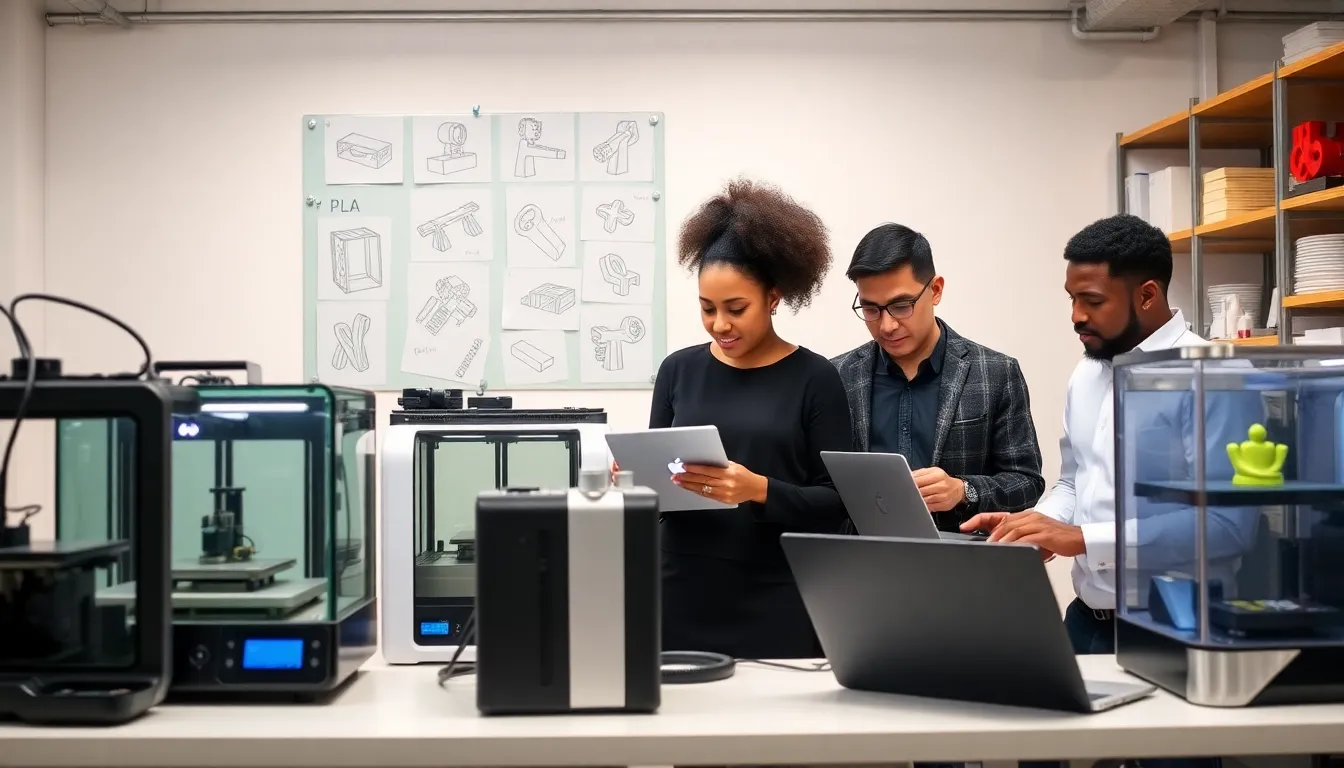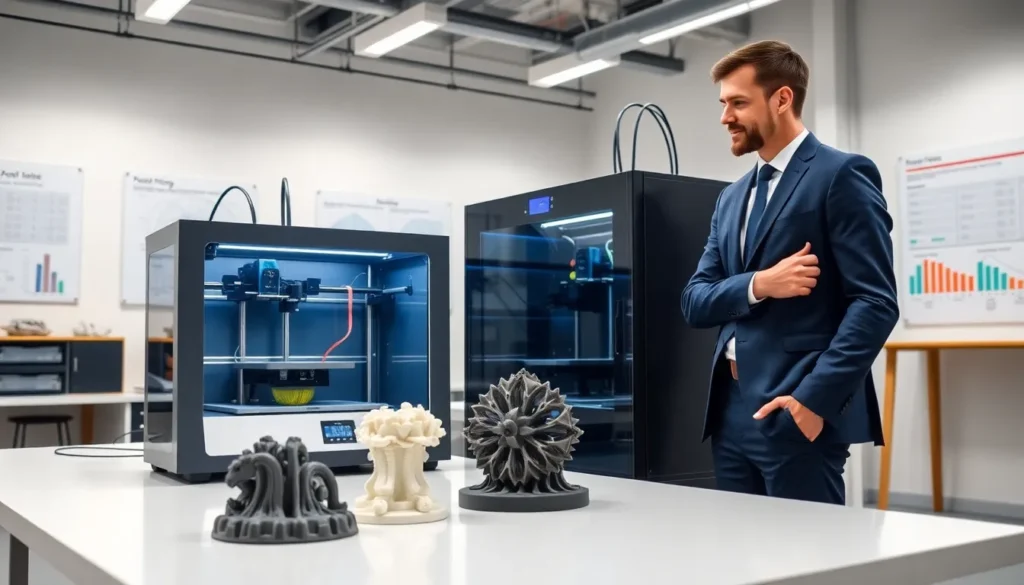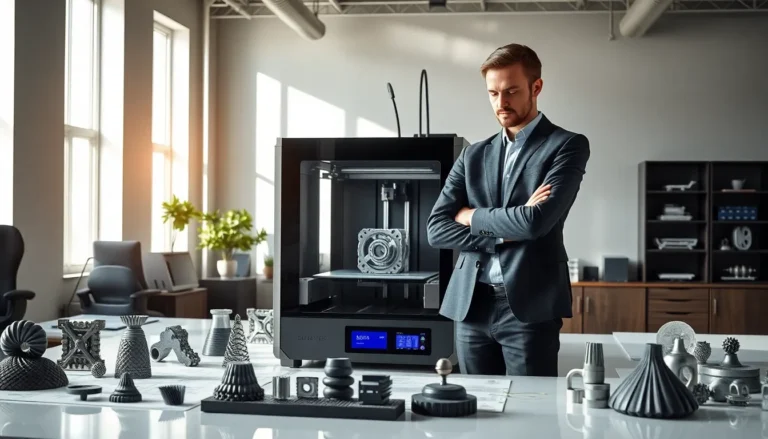Table of Contents
ToggleWhen it comes to 3D printing, one might expect a hands-on experience that defies the laws of time. Sure, we all want our custom creations to pop out instantly, but is that realistic? Spoiler alert: It isn’t. In this text, we’ll unpack the various factors that influence how long 3D printing actually takes, so you’re not left tapping your foot while waiting for your next masterpiece. Let’s jump into the world of 3D printing, where patience truly is a virtue.
Factors That Influence 3D Printing Time

Type of 3D Printer
Different 3D printers operate on distinct principles, leading to varying print speeds. Fused Deposition Modeling (FDM) printers are generally slower than their resin counterparts. But, some high-end FDM printers can compete with other technologies, so one can’t paint all printers with the same brush.
Material Used
The material involved plays a crucial role in determining print duration. For instance, PLA is easier and quicker to print compared to ABS, which may require higher temperatures and longer cooling times. The choice of material could either expedite the process or turn it into a marathon, choose wisely.
Design Complexity
Complex designs translate into longer print times. Intricate patterns or numerous supports require the printer to work overtime, resulting in extended wait periods. It’s essential to keep this in mind when crafting designs. A few extra minutes spent simplifying can save hours later.
Print Settings and Quality
Believe it or not, the settings can change everything from the patience needed to the final outcome. Higher quality settings will yield better results, yet they’ll significantly increase the print time. Alternatively, rushing through can lead to a disaster. It’s a delicate balancing act.
Average Printing Times by Technology
FDM Printing
FDM printing average times can range from a few hours to several days depending on the size and complexity of the project. Smaller prints might take just a couple of hours, while larger ones may stretch into the days. It’s a classic tale of size versus speed.
SLA Printing
Stereolithography (SLA) can often be quicker than FDM for intricate designs due to its precision. Average times usually range between one to four hours for smaller prints, while larger pieces can take up to twelve hours. There’s beauty in the details, but it doesn’t hurt to be mindful of the clock.
SLS Printing
Selective Laser Sintering (SLS) is often reserved for industrial applications and can take anywhere from a few hours to over a day. While it offers fantastic strength and detail, the trade-off is often longer wait times. Make sure you plan accordingly if you lean towards this technology.
Post-Processing Considerations
Importance of Design Optimization
After printing, there’s often some cleanup involved. Optimizing the design initially can significantly reduce post-processing time, making the entire project more efficient. Less support material means less cleanup, nobody wants to spend hours scraping away excess filament.
Techniques to Reduce Print Time
Using fewer supports, adjusting layer height, and optimizing infill percentage can speed up print times without sacrificing too much quality. Employing these techniques gives the final product a fighting chance while keeping the clock in check.
Case Studies: Typical Print Times for Common Projects
Small Prototypes
Small prototypes often take only 1 to 3 hours for FDM printing and about 1 hour for SLA, making them incredibly fast to produce. The quick turnaround is ideal for brainstorming sessions or rapid feedback loops.
Large Models
In contrast, large models can take anywhere from 8 hours to several days for FDM, depending on the print settings and design complexity. These prints demand patience, but the results can be stunning and fulfilling.
Multi-Component Assemblies
When it comes to multi-component assemblies, the total time includes printing each part separately. This can lead to total print times ranging anywhere from 12 hours to several days, depending on how many components are involved.




